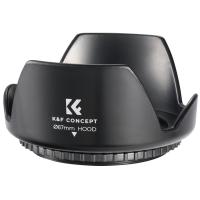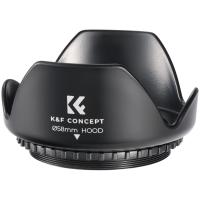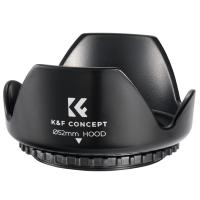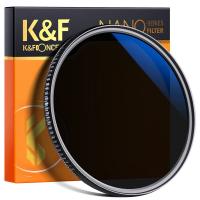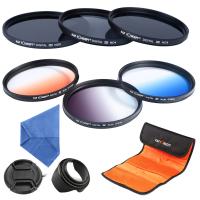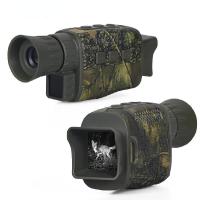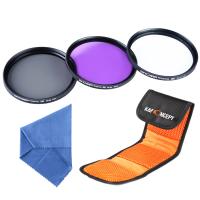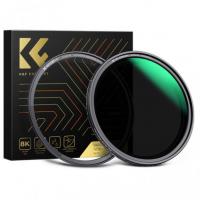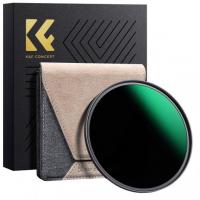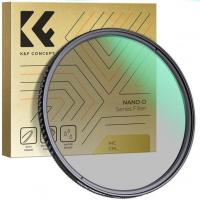White Mist Filter: When and When Not To Use One
2024-09-11 10:39:30
Among the many tools photographers use to shape their images, the White Mist Filter stands out as a versatile accessory capable of adding a subtle dreamlike quality to photos. This filter diffuses light, softens harsh edges, and creates an ethereal glow around highlights. Let’s maximize photographers’ potential by using the white mist filter at the right time!
What Is a White Mist Filter
A White Pro Mist Filter works by diffusing bright light, creating a soft glow in the highlights and reducing overall contrast. This effect can range from subtle to pronounced, depending on the strength of the filter. Unlike traditional filters that aim to enhance clarity or correct light imbalances, White pro Mist Filters are used to introduce softness, adding a touch of cinematic atmosphere or ethereal quality to the image.
Key Effects of the White Mist Filter:
Softening Details: It reduces the sharpness of fine details, particularly in the highlights, which can give a smoother and more polished look.
Highlight Glow: A gentle, blooming effect around bright areas of the image, enhancing the mood.
Lowered Contrast: A slight reduction in contrast, which gives images a more balanced, gentle appearance.
With these core characteristics in mind, let’s explore how photographers can make the most of this filter in various situations.
Types of White Mist Filters
The white mist filters have different types too, and here’s a table comparing different strengths of Mist Diffusion Filters and their effects on images:
Filter Strength | Effect on Highlights | Effect on Contrast | Softening of Details | Best Suited For | Not Ideal For |
| 1/8 Strength | Very subtle glow around highlights | Minimal reduction in contrast | Minimal reduction in contrast | Subtle mood enhancement, portraits in controlled lighting | High-detail shots, sharp landscapes |
| 1/4 Strength | Moderate glow, highlights soften | Mild contrast reduction | Noticeable softening of fine details | Portraits, low-light scenes, outdoor cinematic shots | High-contrast scenes, detailed landscapes |
| 1/2 Strength | Pronounced glow, stronger highlight diffusion | Moderate contrast reduction | More visible softening, reduces sharpness | Artistic photography, vintage looks, low-light night photography | Detailed product or architecture shots |
| 1 Strength | Strong glow, significant diffusion | Considerable contrast reduction | Significant softening, details blurred | Detailed product or architecture shots | Any photography needing sharp detail, high clarity |
Stronger White Diffusion Filters create more pronounced glow, reduce contrast, and soften details. Lower strengths (1/8, 1/4) offer subtle effects, suitable for portraits and soft light. Higher strengths (1/2, 1) are ideal for dreamy, artistic shots but reduce sharpness, making them unsuitable for high-detail photography.
When to Use a White Mist Filter
A. Portrait Photography
Portraits benefit greatly from the softening effects of a White Mist Filter. It helps to smooth out skin imperfections and adds a gentle glow, creating a flattering look for subjects. By diffusing harsh highlights and shadows, it can create a more balanced light across the face and body, giving a dreamy, cinematic quality to the image.
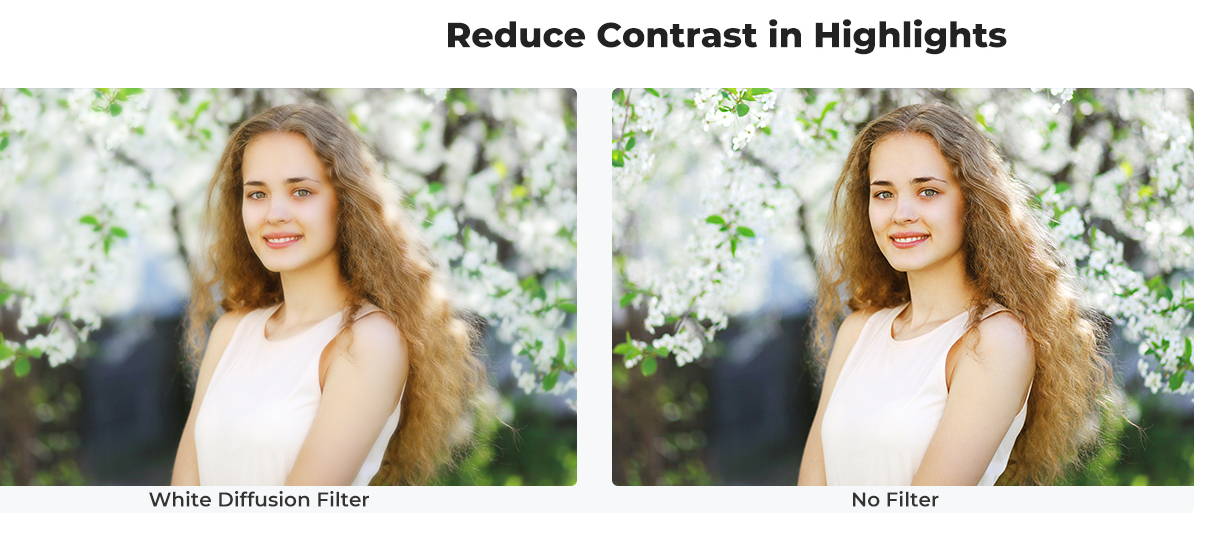
Use Case Example: Imagine shooting a close-up portrait as shown above during golden hour. The natural light is beautiful but a bit too harsh, especially on the skin. A White Mist Filter will soften these highlights, creating a delicate glow that enhances the subject’s features without overexposing parts of the image.
Tip: When using the filter for portraits, it's best to combine it with natural or diffused lighting for optimal results. The filter helps reduce the need for excessive post-processing, particularly when aiming for a softer, more romantic feel.
B. Cinematic and Artistic Shots
One of the most popular uses of the white diffusion filter is in creating cinematic and artistic imagery. Filmmakers and photographers often use it to recreate the soft, glowing highlights seen in classic cinema or to create a dreamy mood that transports viewers into a different reality. The filter is perfect for producing shots with emotional depth, as it subtly diffuses light and adds texture to scenes without compromising the overall clarity too much.
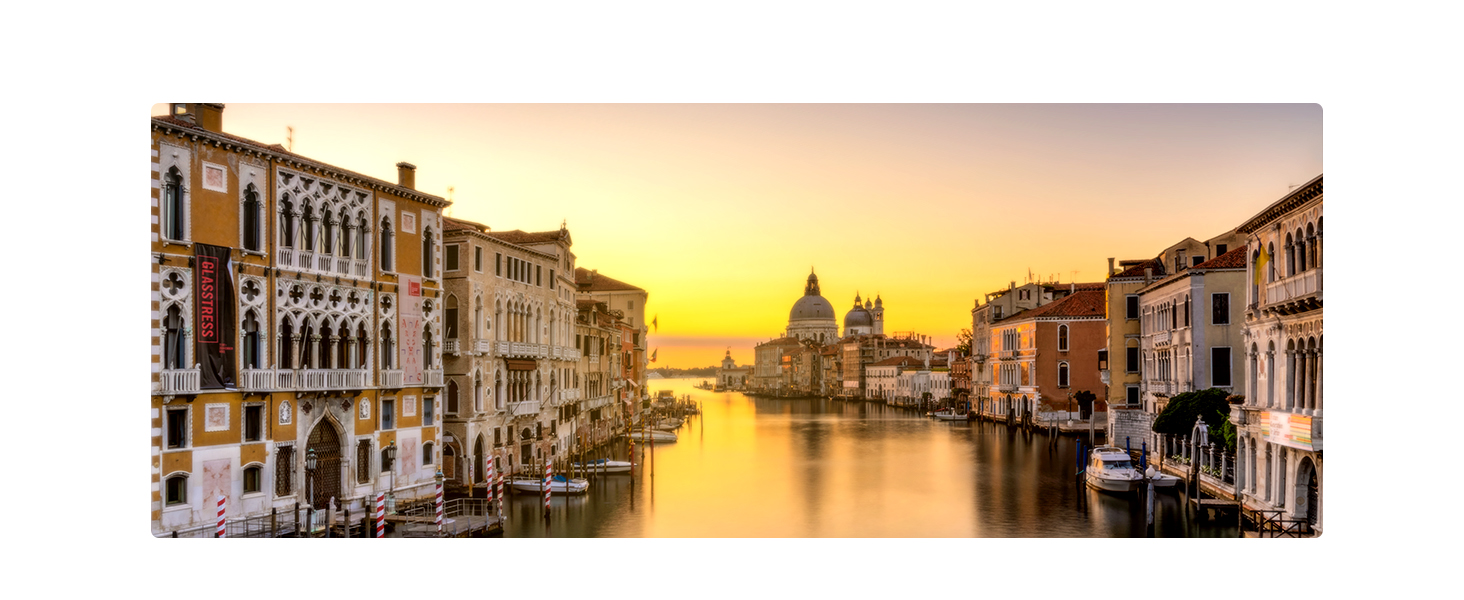
Use Case Example: When shooting a foggy forest scene or a cityscape during twilight, the White Mist Filter enhances the glow of lights, mist, and reflections. This can be especially powerful when aiming for a nostalgic or emotional atmosphere in your shots.
Tip: If you're aiming for a film-like quality in your work, experiment with different strengths of the White Diffusion Filter. A lighter mist creates a more subtle effect, while a stronger mist can result in a more dramatic, hazy appearance.
C. Wedding and Fashion Photography:
In wedding and fashion photography, a White Diffusion Filter can create a soft, romantic glow that enhances the elegance and beauty of the subject. By diffusing harsh light and reducing contrast, it smooths out imperfections, giving the image a polished, ethereal quality.
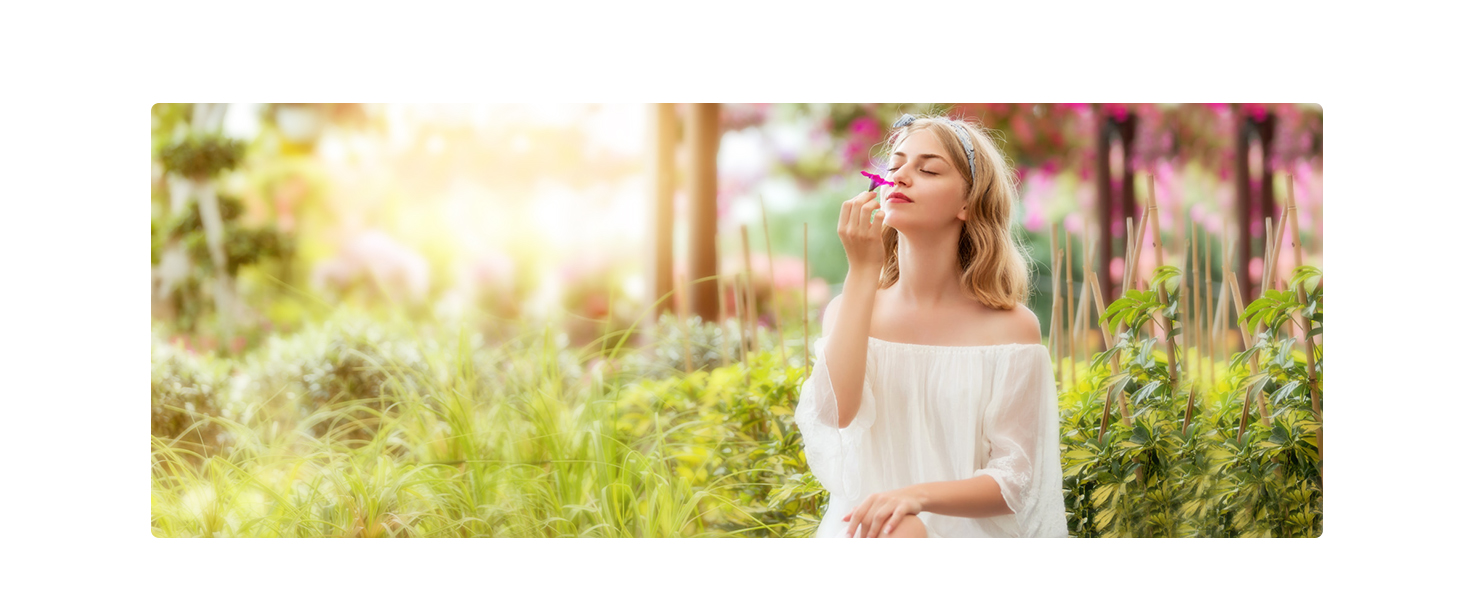
Use Case Example: Picture an outdoor wedding shoot during the late afternoon. The natural light is beautiful but can be too direct, casting harsh shadows on the bride’s dress and face. Using a White Mist Filter softens the light, reducing the intensity of highlights and shadows, and creates a gentle glow that makes the entire scene feel more elegant and romantic.
Tip: For wedding and fashion photography, combine a White Diffusion Filter with soft natural or studio lighting. The filter will enhance the softness and reduce the need for heavy post-processing, providing a naturally beautiful, cinematic quality to your images.
D. Landscape Photography:
Landscape photography can benefit significantly from the atmospheric effects of a White Pro Mist Filter. This filter adds a gentle, diffused haze to misty or foggy scenes, enhancing the sense of depth and mood in your image. By softening the edges and reducing contrast, it helps to create a more immersive, three-dimensional feel, perfect for capturing the serenity of an afterglow-filled late evening or the quiet calm of a foggy forest.
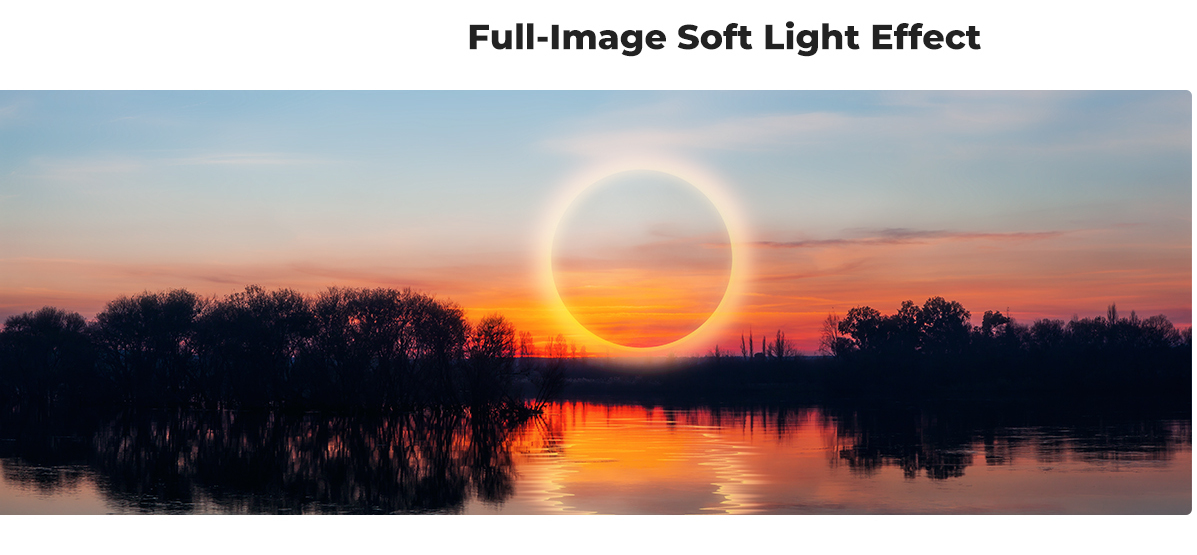
Use Case Example: Imagine photographing a fog-covered valley at dusk. The scene is naturally atmospheric, but a Diffusion Filter will accentuate the glow of the fog, softening the edges of trees and hills in the background. This subtle diffusion adds depth and texture, making the scene feel more dreamlike and otherworldly.
Tip: Use a White Mist Filter in low-light conditions, such as early morning or late evening, when the natural light is already soft. This enhances the atmospheric quality without overwhelming the details of the landscape, allowing you to capture both mood and depth in the scene.
When Not to Use a White Mist Filter
1. Detailed Landscape Photography:
Landscapes, especially those rich in texture and fine details, such as a rugged mountain range or the fine texture of a desert, are not well-suited to White Mist Filters.
2. High-Contrast Scenes:
When shooting in environments with high contrast, such as bright midday sun or strong artificial lighting in the dark, a White Pro Mist Filter can flatten the contrast too much, leaving the image looking washed out.
3. Sharp, Detailed Photography:
In scenarios where sharpness and clarity are paramount—such as product photography, architectural photography, or wildlife shots—the White Mist Filter is not ideal. The mist filter’s softening effect blurs fine details, which could result in images that lack the precision and focus required for these types of photography.
What Is the Difference Between White and Black Mist Filters?
White mist filter vs black mist filter, which is better? Maybe you are bothered by this question too, let’s compare these two mist lens filters together.
White Mist Filter: Softens highlights and reduces contrast, creating a dreamy, glowing effect with a noticeable bloom around bright areas.
Black Mist Diffusion Filter: Softens highlights but preserves contrast better than a white pro mist filter, resulting in a more subtle diffusion without significant loss of detail.
Effect on Shadows: White pro mist filters soften both highlights and shadows, while black mist filters maintain deeper shadows for more balanced contrast.
Use Case: White pro mist filters are ideal for creating a vintage or cinematic look, while black mist filters are better for preserving a natural feel with subtle softening.
Overall Appearance: White mist lens filters give a more ethereal, dramatic glow, while black mist filters provide a less intrusive softening, making them suitable for retaining clarity with a slight atmospheric touch.
In summary, use a white diffusion filter for dreamy, glowing effects in portraits, weddings, or artistic shots. Opt for a black mist filter when you want subtle highlight softening while preserving contrast and detail, ideal for a more natural look.
Recommended White Mist Filters and Brands
For White Mist Filters, K&F Concept offers high-quality options that enhance your photography. Here are a few recommended products:
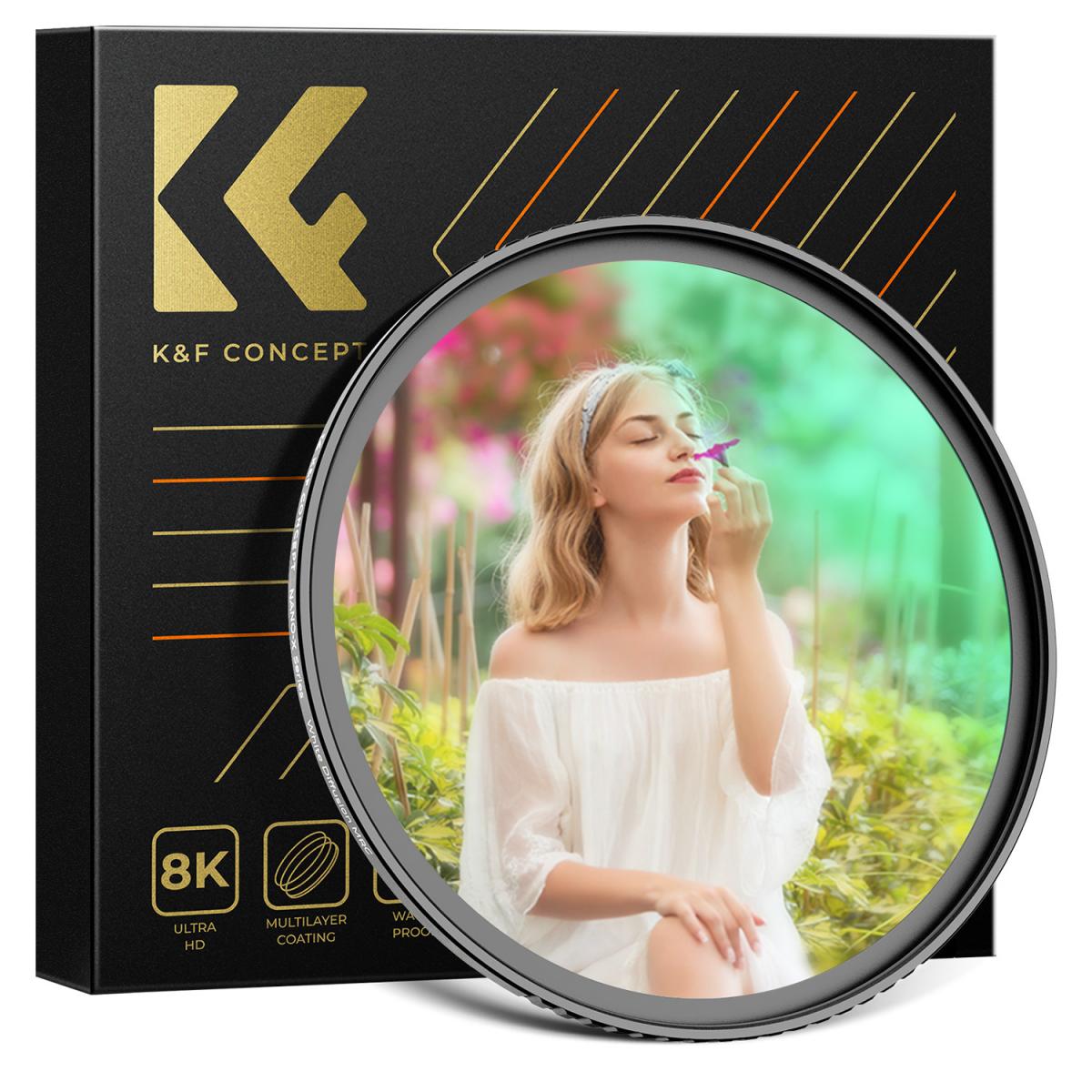
- Soft & Dreamy Visuals;
- Premium Optical Glass;
- Uncompromising Clarity;
- Precision CNC Design;
- Sleek & Durable
Conclusion
When used in the right context, a White Mist Filter can be a powerful tool to shape light and mood. Discover how this filter fits into your photography style, and don't be afraid to use it creatively to craft visually stunning images!




